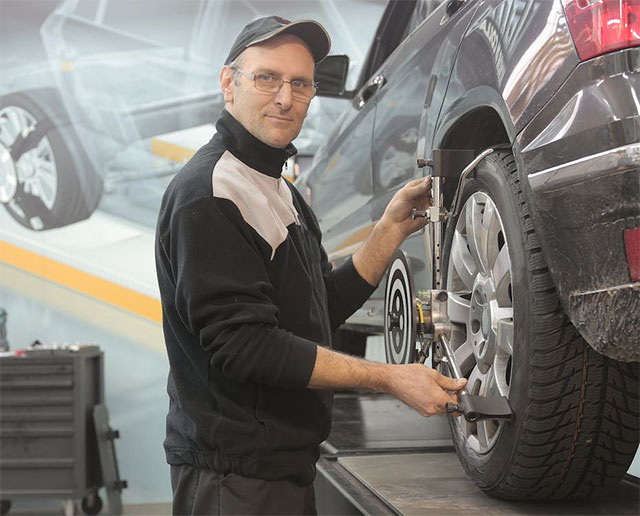How long does it take for a car to cool down is a common question many drivers ask us. Except for all-electric vehicles, all others use an internal combustion engine to power them. Since the engines burn fuel for power, they generate heat, and the car has a system to manage the temperature.
When the cooling system fails, the vehicle’s temperature could increase to a dangerous level. That’s why it’s crucial to know how long do you have to wait before your car cools down? Today, we’ll discuss the general causes of overheating, how long vehicles take to cool down, and possible solutions.

Table of Contents
How Long Does it Take for a Car to Cool Down?
The time it takes for your vehicle to cool down depends on the issue and the temperature. However, generally, a car takes around 30 minutes to return to its normal state after overheating. It’s crucial to know this time frame, as you should only inspect the car after it has cooled down properly. After inspection, you can move on to the problem that caused the engine to overheat and fix it.
Your safety is another reason to know how long does it take for a car to cool down. When the engine overheats and you stop driving – the engine, radiator, and coolant are still hot for most of the cooling process. If you inspect the car and fix the issues causing overheat, you could injure your hand.
The time it takes for your car to cool down also depends on the difference between your engine and the environment’s temperature around you. The convection cooling reduces considerably when the engine cools down and reaches near the surrounding air’s temperature. That’s the reason why it often takes hours for vehicles to cool down to the atmosphere’s temperature.
What Are Car Heating Causes?
Before discussing how long does it take for a car to cool down and the possible solutions, it’s essential to know what causes the overheating. Various malfunctions can result in the vehicle engine producing excess heat. Of course, every powerplant has a cooling system to combat the heat. This system comprises the thermostat, water pump, heater core, and radiator. If any of these components malfunction, the cooling system may not work correctly. It compromises the protection against the heat and lets the engine produce more heat than usual.
If the overheating issue relates to the coolant hose failure, it will be relatively inexpensive and straightforward to fix. The breakdown causes a quick coolant leak, leading to a rapid overheating problem. To tackle this situation, pull over the vehicle at once and stop driving. First thing first, replace the coolant hose to avoid further damage to the engine.
Besides coolant hose failure, the engine overheating could be due to expensive problems such as water pump and radiator breakdowns. Furthermore, cooling fan malfunction is another common cause of car heating. The fan is either engine- or electric-driven, each requiring a different fix. The engine-driven cooling fan failures are primarily a result of a bad fan belt. However, replacing the fan belt is reasonably cheap.
Whatever the cause is, a neat trick is never to use an overheated car. Whenever you feel the heat is getting intense, pullover immediately away from traffic. Allow the vehicle to cool down before even inspecting it for the heat cause, let alone driving it again.
How Does a Car Cool itself?
Before moving on to how long the cooling process takes, we must know how the car cools itself. In any vehicle, the cooling system is responsible for combating the heat. The four significant components of this system include the radiator, water pump, thermostat and, cooling fan. Moreover, hoses connect these parts to the engine, taking the coolant through. As the coolant enters the engine, it carries out the task of collecting the heat. Once the coolant reaches the radiator through the mill, it disposes of the accumulated heat during its journey. In a running vehicle, this process takes place constantly.
The coolant’s temperature shows how good the engine’s health is. Upon reaching the coolant’s temperature limit, the engine requires immediate maintenance to keep operating as usual. If the engine temperature exceeds this limit, it’s advisable to avoid driving further before getting the needed repairs. Driving with an overheated engine can damage it and require a costly overhaul.
What Are The Consequences of Driving a Heated Car?
An overheated car can pool in various problems. While some of these are minor, a few can cause costly repairs. To begin with, an overheated car can transfer its heat to the other components and damage them. The maintenance of these parts can be expensive and seriously hurt your wallet. Moreover, the heat can harm the parts within the engine and cause an overall engine failure. If you couldn’t manage to repair or replace the engine, your vehicle may end up in a junkyard.
Moreover, overheating can cause the engine to seize up. It happens when the heat within the engine welds the components together, stopping them from operating as usual. Attending to this issue and returning the engine to its normal state is expensive. Furthermore, when it occurs, the car can lose power at once. Hence, the engine collapse can lead to potential accidents if you’re not careful.
The best way to avoid running into expensive repairs is to pay heed to your car’s dashboard. When the overheating symbol appears on it, immediately stop driving and attend to the matter first.
Do Engines with Aluminum Blocks Cool Quicker?
Some engines feature aluminum blocks instead of iron ones. Engines with aluminum blocks indeed display a faster cooling process than iron block engines. However, aluminum blocks run more risk of damaging themselves from heat than iron blocks. Therefore, no matter what blocks your engine features, open the hood to improve the air circulation and quicken the cooling process.
Summary
Rising engine temperatures are a common phenomenon, mostly in summers. A heated engine cannot only prove detrimental for your car but also for yourself. That’s why it is essential to understand how long does it take for a car to cool down.’ Every vehicle has a cooling system in place to manage the heat. However, issues within the system, such as a bad radiator or coolant hose failure, can quickly raise the engine’s temperature. Before opening the hood and inspecting the problem, you should wait for at least 30 minutes for the vehicle to cool down properly. An overheated car can cause you an injury if you’re not careful!
FAQs
How do I cool down my car faster?
Switch on the air conditioner simultaneously.
Keep the vents down.
Open the windows for 2-3 minutes.
Then close the windows and turn on the recirculated air.
Should I let my car cool down after driving?
road assistance if available.













